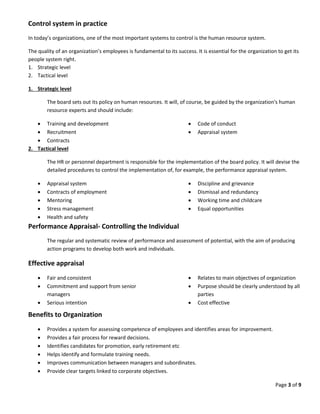The document discusses various control mechanisms in management, emphasizing the importance of ensuring operations align with planned objectives. It outlines types of organizational controls such as personal, bureaucratic, output, and clan control, as well as levels of control from strategic to operational. It also covers human resource systems, performance appraisal, mentoring, health and safety, and the legal aspects of discipline and grievance procedures in organizations.








